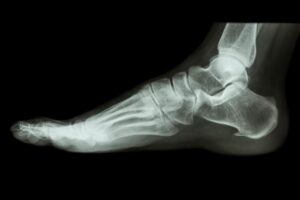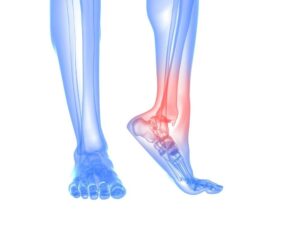Here’s What to Expect During Your Pulse Wave Therapy Session

When chronic foot pain doesn’t respond to conservative treatment, it can become a long-term problem that gets in the way of your everyday life. Thankfully, if you’re in this situation, a revolutionary treatment called pulse wave therapy is now available.
This incredible FDA-cleared technology can resolve your foot condition in just a few short sessions without any invasive surgery or procedure. Understand what to expect when podiatrists Ryan Golub, DPM, and Zachary Flynn, DPM, AACFAS, perform your pulse wave therapy session at Arizona Foot Health in Phoenix, Arizona.
About pulse wave therapy
Pulse wave therapy uses ballistic sound wave technology to heal damaged soft tissues, tendons, and fascia. When the sound waves enter the area where you have chronic injury or pain, they encourage your body to produce new connective tissues and heal the current tissues.
The sound waves also help reduce pain by overstimulating nerves that send pain receptors to your brain. The end result is that your body heals itself more rapidly than it would without pulse wave therapy, and you experience less pain while you’re recovering.
Why get Pulse Wave Therapy?
Pulse wave therapy is a simple, noninvasive treatment for many people with conditions like plantar fasciitis, shin splints, and tendinitis. It produces results without needing to accept any risks or recovery periods associated with surgery.
Pulse wave therapy can also be a better alternative to physical therapy. It’s often more effective than physical therapy, usually takes fewer sessions to improve your condition, and frequently ends up being less expensive.
Your pulse wave therapy session
Pulse wave therapy treatments take place at the comfortable Arizona Foot Health offices. Our podiatrists have you get comfortable, usually lying down, to start the procedure.
Once you’re ready to start the treatment, your podiatrist uses an applicator to perform the pulse wave therapy. The small applicator looks similar to the one used during an ultrasound.
To begin your treatment, your podiatrist gently presses the applicator on the area where you have pain or a chronic condition. You will feel the applicator slowly move in circles while your provider administers the ballistic waves.
During this process, you might feel slight discomfort or pain, which helps your provider identify the areas that need targeted treatment from the sound waves. The entire treatment is over in only five minutes.
After pulse wave therapy, you can typically expect to return to your usual routine immediately. You might feel soreness in the treatment area for a couple of days, and occasionally, you can experience bruising.
Our podiatrists often recommend a series of four to five Pulse Wave Therapy sessions, taking place once per week. Our team makes a customized Pulse Wave Therapy plan with you before you start treatment.
Pulse Wave Therapy has a high treatment success rate for many foot and ankle conditions and is easy, convenient, and virtually risk-free. To find out more about Pulse Wave Therapy and whether it’s a good option for you, contact us now to learn more.
You Might Also Enjoy...
The Achilles Heel
Given Arizona’s climate, patients are able to remain active year round. It’s why we all chose to live here. But…
Alleviating Back Pain and Other Benefits of Custom Orthotics You Didn’t Know About
Would you ever imagine that custom foot orthotics could improve your quality of life? That’s what many people say after…
9 Helpful Tips to Prepare Your Home Before Bunion Surgery
When moderate interventions, such as wearing wider shoes or using pads in your shoes, fail to ease your bunion pain…
When Should You Go to the Doctor for an Ingrown Toenail?
In most cases, you can nurse an ingrown toenail at home with over-the-counter pain medication, topical antibiotic creams, and soaking…
6 Home Exercises to Keep Your Ankles Strong
Ankles that feel wobbly and weak are vulnerable to injury. If you play sports, run, jump, or just walk often,…
Is Surgery My Best Option For Treating Bunions?
You have a bunion and it isn’t pretty, but if your bunion is small enough, or doesn’t hurt, you may…






